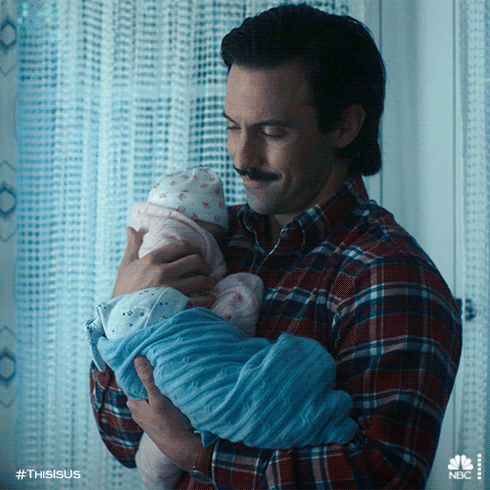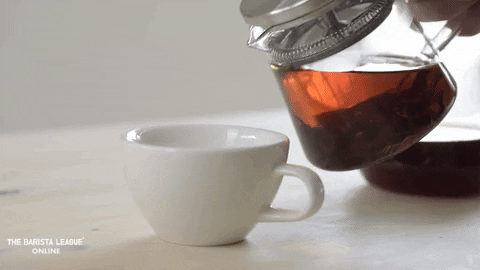Technique Toolbox: 5 of my top mindset tools for supporting yourself in real time
5 mindest techniques to support yourself in real time
Connective Threads is a weekly exploration of science, technology, and philosophy threading together actionable insights on health, happiness, and human connection for a more intentional and fulfilling life.
Rupi Kaur's poem, "How you love yourself is how you teach others to love you," really hits home with a powerful message about loving yourself and how it changes the way others treat you. It's like setting the ground rules for how we want to be respected and loved. When we show ourselves love, respect our own boundaries, and acknowledge our worth, we're basically showing others, "Hey, this is how it's done." It's more than just setting a good example; it's actively teaching others that we value ourselves and expect the same in return.
Building on this foundation, creating a "technique toolbox" for self-love or self-support is very helpful so we can quickly recall personalized strategies and practices that help us show up for ourselves in the best possible way. This toolbox could include anything from daily affirmations that boost our self-esteem to setting aside time for self-care rituals that rejuvenate our spirit or establishing clear boundaries that protect our energy.
In the last five editions of Connective Threads, the main point of feedback I have received is that people love the neuroscience behind the ‘why’ but, even more so, enjoy engaging with strategies that can resonate with their own lives and that they can put into practice. So, the “Technique Toolbox” edition of Connective Threads has been born. I will regularly do editions of explorations with several direct concepts that people can put into practice, which I have learned from mentors, scientists, thought leaders, and philosophers.

Each tool in the toolbox that we will develop together is a method we can use to reinforce our self-worth and remind ourselves of our value. It's about having a go-to set of techniques we can pull from whenever we need to remind ourselves that we're worth the effort. This isn't just about feeling good in the moment - it's about building a sustainable practice of self-love and self-support that teaches others that we know our worth and aren't afraid to uphold it. Through this toolbox, we equip ourselves with the means to not only love ourselves more deeply but also to set a standard for how we allow others to treat us, further reinforcing the message, "This is how I love me, and this is the standard I hold myself and the people around me to”
So, let’s get to it.
Today’s 5 Mindset Techniques:
Speak to yourself only how you would speak to your best friend
Treat your brain like your child
Mindful walks
Breathe through it
Pour a cup of tea for your older self
1. Speak to yourself only how you would speak to your best friend
This was probably the single most transformative strategy I implemented when I was going through tough times in my life. This practice spawned when I was at my lowest point after my last breakup and found myself in moments of self-deprecation, asking myself, “Am I too difficult to be loved?” “Am I asking for too much?” “Am I capable of achieving the things I want out of life?” etc.
I do not recall when I heard this practice mentioned in a podcast, but I recall explicitly that the podcast did not intend to highlight or dig deep on it. It was a fleeting moment when someone mentioned that they practice it on a regular basis.
I had been talking to one of my best friends, Ellen, earlier that day, and I immediately pictured her.
Had Ellen come to me and said, “Am I too difficult to be loved?” “Am I asking for too much?” “Am I capable of achieving what I want out of life?” I would have immediately stopped her and probably not let her finish even the first question. My goal as a friend would be to show up with the utmost support and compassion to ensure she knows how amazing she is.
So why was I not doing that to myself?
This started to become a practice where I would stop myself mid-negative thought and ask “Would I say this to Ellen?” and it still to this day will stop me in my tracks. The case is often “No, I would never.” so I immediately stop saying it to myself.
It took me several months of practice before it became a natural reflex, but now it is is one of the most effective tools that I have in my toolbox for any negative thoughts.
The brain is very plastic, meaning we can train and mold it in ways that work for us. The mere repetition of asking yourself this question will tell your brain that this is important and should become a regularly referenced neural pathway. Like any habit, the more frequently you practice positive self-talk, the more engrained these neural pathways become. This is similar to strengthening a muscle through exercise; the neural pathways for compassion and positivity become stronger and more readily accessible, making positive self-talk and self-compassion more automatic responses to challenges.
So next time you wonder, “Am I too much?” or “Am I asking for too much?” follow it up with “How would I respond to my best friend?” and proceed from there.
2. Treat your brain like your child
This practice came to me from a neuroscientist named Daniel Amen, MD [1]. He is known for his work on brain health, and his business, Amen Clinics [2], which focus on helping people understand the health of their brains, and also often discusses how to raise mentally resilient children with healthy brains.
As I was listening to him discuss the work he has done in scanning the brains of children to understand the correlation between brain health and positive and negative behaviors and thoughts, a question was posed to him: “How can I proactively ensure that I am making good choices for my brain and mindset regularly”, and he said “Treat your brain like your child”.
It became that simple.
Would you give your child copious amounts of sugar? No. So why would you give your brain that if you know better? Would you make alcohol readily available for your child, knowing that it is a poison? No. So, apply that logic to your own life, and these decisions become much more simple.
Treating your brain like a child to foster a positive mindset is an effective approach that really draws together elements of compassion, patience, and nurturing. This tool can significantly impact mental health and cognitive function by encouraging a supportive and forgiving relationship with oneself.
Here’s how I think about it:
1. Creating Patience and Understanding
Just as a child learns through trial and error, your brain also needs room to grow, make mistakes, and learn from them. Approaching your own mistakes and learning processes with the same patience and understanding you would offer a child can reduce frustration and self-criticism. This gentler approach allows for a learning curve and recognizes that growth and development are ongoing processes, fostering a more positive mindset (aka, don’t beat yourself up when you slip up).
2. Providing A Nurturing Environment
Just as a child thrives with nurturing care, your brain benefits from practices that support its well-being. This includes physical care, such as adequate sleep, nutrition, and exercise, as well as mental care, like stress management and engaging in stimulating activities. By taking care of your brain's needs, you create an environment conducive to positivity and resilience.
3. Celebrating Efforts and Small Wins
In your childhood, encouragement and celebration of small achievements are key to building confidence and a sense of capability. Applying this principle to how you treat your brain—by celebrating small wins (even as small as making your bed) and acknowledging the effort put into tasks—can enhance self-esteem and encourage a positive and motivated mindset. Recognizing progress, no matter how small, reinforces positive behavior and thinking patterns.
4. Applying Unconditional Support
Offering unconditional support to your brain, much like you would to a child, means accepting yourself fully, including both strengths and weaknesses. This unconditional positive regard fosters self-acceptance and reduces the harmful effects of conditional self-esteem, which can fluctuate based on achievements or comparisons to others. A stable sense of self-worth supports a consistently positive mindset.
So next time you find yourself in a moment of mental distress and unsure what to do, remember that your brain is just a child and needs support. Don’t beat yourself up. Simply forgive the mistake you made, and step into supporting your brain and in-turn yourself.
3. Mindful walks
Integrating mindful walks into your routine as a mental reset tool can be incredibly beneficial for managing stress, regulating emotions, and fostering a positive mindset. I started making a mindful walk a regular thing any time I left a meeting feeling like my heart rate had increased or I could feel an increase in cortisol starting to produce.
This is why:
Acts as a Stress Regulator
As you start moving, your body will decrease cortisol, loosen up, and shake off tension. While focusing on the here and now, your mind will cut through the noise in your head. It's like giving your mind and body a mini-vacation from stress, helping everything to settle back into a calm state.
Elevates Mood
No matter when you go for it, stepping out for a walk can brighten your day. A bit of sunlight and fresh air will start to increase your serotonin levels, making you feel happier and more relaxed. It's a straightforward, natural pick-me-up, perfect for when you're feeling the need to focus on a positive mindset.
Stimulates Mental Clarity
Taking a break for a mindfulness walk can clear the mind and improve focus. The physical activity increases blood flow to the brain, which can enhance cognitive functions and spark creativity. The combination of moving your body and paying attention to the moment will also increase oxygen supply to your brain, helping you think clearer.
Incorporating these walks as a strategy for mental and emotional regulation really focuses on the natural influences of physical activity, mindfulness, and nature exposure that we all have available to us. It’s a versatile tool that can be tailored to fit individual needs and schedules, providing a readily accessible means to support yourself, foster a positive mindset, and maintain a healthy emotional state.
4. Breathe through it
Sometimes, life can feel overwhelming simply because your body’s natural response is to enter a state of stress, triggering the sympathetic nervous system, which prepares the body for ‘fight or flight’. This leads to increased heart rate, faster breathing, and increased alertness, all of which can increase the feelings of anxiety. By consciously changing our breathing pattern, we can shift the balance towards the parasympathetic nervous system, known as the 'rest and digest' system, which helps to calm our bodies and minds.
Deep, slow breathing is particularly effective in this regard. When we breathe deeply, it sends a signal to the brain to calm down and relax. The brain then sends this message to the body. This breathing increases the level of oxygen in our blood, which helps to lower stress levels, reduce heart rate, and lower blood pressure, creating a feeling of calm. It also improves focus and concentration by increasing blood flow and oxygen to the brain, facilitating a return to normal thought and decision-making.
I like to use a 5 second rule. I open my phone and start the stopwatch and inhale for 5 seconds then exhale for 5 seconds. I aim to do this for anywhere from 2-3 minutes until I can feel myself coming back to normal.
Take a moment. Breathe slow. You are safe. Bring yourself back to homeostasis and make sure your decisions are coming from a rational place.
5. Pour a cup of tea for your older self
My final tool for when you find yourself at needing support is one of my favorites. It is called “to pour a cup of tea for my future self”. This leans heavily into my manifestation and spiritual side, so here we go:
Pour a cup of tea for your older self
I will sit in my living room with my candles burning and no lights on and sit with an open chair across from or next to me. I physically set out two glasses of tea and brew a kettle of hot water and pour it into each cup. Then I allow future Brian to arrive into the space with me.
I visualize him.
I feel him.
I breathe him.
I look at his complexion and age.
I hold his hand, feel his touch, feel the skin.
I see his energy, his posture, the light he brings into the space.
I connect with this future self as an elder, wiser version of me. Sometimes he is me in 2 years, me in 5 years, me at 50, me at 75.
Once he is in the space, I pour him a cup of tea.
Before I lean into anything further, I sit and admire who has show up for guidance today. I connect with him. I feel his life experience that he is bringing to the situation and the expertise.
I am deeply present with him.
I am deeply vulnerable with this person - almost to a degree that goes beyond how vulnerable I can be with the real people in my life. But I can do it because it is me. Future me knows all the thoughts and experiences that have ever gone through my head and how I have thought of dealing with them.
I notice his quality of presence and the light and energy he brings to the space.
This space sometimes provides me with all the answers I need to the crossroads I came to this space with, or if I have more specific questions: “How do I approach this?”, “How do I overcome this challenge?”, “How do I find the power to be make this right?”, etc.
I have now created the space to ask, and so I do.
He may not speak to me in words (mine almost never do), but he may be the thing, the energy, the presence, that helps me get through this moment. And my ability to just witness, be open, and receive can be the healing ability I am searching for.
I often sit for 5-15 minutes, no phone (unless guided), no lights. Just me, my future self, and the present moment.
There have been times where I have cried, I have felt inspired, I have had an immense weight lifted off my shoulders just knowing that things will ultimately be ok no matter what I am working through with the guidance of my future self.
I have heard of this practice being done in many ways with many outcomes and uses. Some people have full conversations with their future selves, some see a relative, and some even look to their younger selves for guidance. Ultimately, the power of bringing that energy and guidance into a space with you can be used however you need it.
Conclusion
Rupi Kaur's poem, "How you love yourself is how you teach others to love you," captures the essence of self-love and its ripple effect on the treatment we receive from others. The core message emphasizes the importance of treating ourselves with kindness, respect, forgiveness, and recognizing our worth, as these actions set a benchmark for how others should treat us. This isn't just about leading by example; it's a proactive approach to showing the world our value and expecting nothing less in return.
I am excited to start building our "technique toolbox" together as a vital strategy for putting our tactics for personal growth in action. This toolbox will be filled with personalized strategies and practices that enable us to show up for ourselves in many ways. These tools not only reinforce our self-worth but also remind us of our intrinsic value, cultivating a sustainable practice of self-love and teaching others to recognize and respect our standards.
Thank you for taking the time to join this week’s exploration. I look forward to exploring with you next week.
All my love,
Brian
Sources:
[1] Daniel Amen: https://danielamenmd.com/
[2] Amen Clinics: https://www.amenclinics.com/








